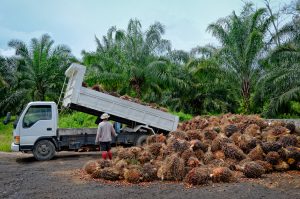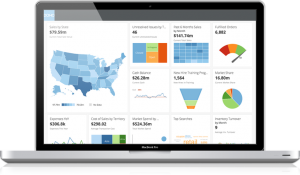Along with countless others in the IT consulting space, I’ve written about the challenges facing businesses as they undergo their various digital transformation initiatives. I find the topic endlessly fascinating, as it not only speaks to today’s business opportunities but explores what will be the foundation for the next century of innovation.
Discussing how IoT, AI, advanced analytics, and other technologies will transform business is what I imagine it must have been like to discuss the transformational impact of the light bulb, transcontinental railroads, the telegraph, and other industrial age innovations. Just as Edison couldn’t have predicted today’s LED lights, we’re likely only scratching the surface of what digital transformation will ultimately bring.
Because many of us come from tech backgrounds and are speaking to other tech leaders, it’s easy to think of digital transformation in terms like migrating from legacy, on-premises technology to modern, cloud-based technologies. In fact, many of the case studies I see are focused on how tech companies have become even smarter and data-driven. However, we need to remember that even the most traditional, analog companies can reap massive benefits from digital transformation.
One interesting example is Sinar Mas, a palm oil company in Indonesia. The company’s general manager Hong Zhou Wong recently shared his experience in transforming to a data-driven organization at Domopalooza 2019, the annual user conference for cloud-based data platform Domo.
Data to Assure “Operational Rhythm”
Sinar Mas is responsible for 500,000 hectares of plantation–4.5x the size of Los Angeles. The company has more than 172,000 employees and sells its product across 70 countries for numerous markets ranging from cooking oil to baby food to cosmetics to pharmaceuticals. As a “seed to shelf” producer, Sinar Mas must excel at wildly different functions–grower, harvester, producer, commodity trader, marketer, and seller.
For Sinar Mas, the company needed a way to use data to help assure its “operational rhythm.” With so many moving parts, along with the challenges of working with a product that’s produced by and is at the mercy of Mother Nature, the company needed to be smarter about using its data to eliminate any lag that could spoil its product and create wastage.
To do so, Sinar Mas uses Domo to capture and analyze data spanning across its 500,000 hectares of activities. From the day’s work of a single harvester in the field to the going market rate of palm oil across its global markets, the company has been able to bring all its data together in a single pane of glass to work as one.
In an organization the size and scope of Sinar Mas, you can’t have a one-size-fits-all way of using data. Wong spoke about how the company uses both a bottom-up and top-down approach: for upstream activities, the company takes a top-down approach to ensure that the entire business is operating in rhythm and without disruption, while downstream activities like day-to-day energy consumption and production efficiency are analyzed using a bottom-up approach. The two perspectives are then combined to give company leaders and managers a holistic view of the company.
Collect, Share, and Collaborate
Something I found interesting about Sinar Mas’ story is that their digital transformation isn’t just about going from no data to data, or stale data to real-time data. It’s about sharing data. In his presentation, Wong told the story about how managers would have to share data using WhatsApp or via paper before they added Domo. This made it impossible for anyone who was not on the text chat or on the other end of the memo to know what was going on at different parts of the company–a significant concern in such an interconnected enterprise.
 Now, Sinar Mas is able to collect, share, and collaborate on data all within a single platform so that everyone has access to the same information in real-time. This not only keeps the business moving but allows different refineries and parts of the business to learn from each other and share best practices.
Now, Sinar Mas is able to collect, share, and collaborate on data all within a single platform so that everyone has access to the same information in real-time. This not only keeps the business moving but allows different refineries and parts of the business to learn from each other and share best practices.
An important thing to remember is that digital transformation isn’t about just collecting or sharing data. It’s about people. Wong shared that people in his organization were initially fearful of the power of Domo. After all, what company leaders would see as the benefit of real-time data and complete transparency of information could be seen as a loss of control to a department manager who used to have time to “smooth” over her department’s data and prepare her version of the story before going into a meeting. Wong said that it was essential to recognize the fear that can come with digital transformation, to take the time to bring staff along, to have a vision for what you’re trying to accomplish, and to build a culture capable of supporting it. I couldn’t agree more.
Digital Transformation Transcends All Boundaries
This same story is being played out around the world every day across every industry and size of business. It no longer matters if your company is a food grower, a manufacturer, a trader, a retailer, or in the case of Sinar Mas, all of the above. Every company is now a tech company.
The more you can incorporate data into your business and your company culture, the more you can reimagine the way your business can and should be operated. The result will make today’s most revolutionary promises of digital transformation merely the foundation for what’s to come.

